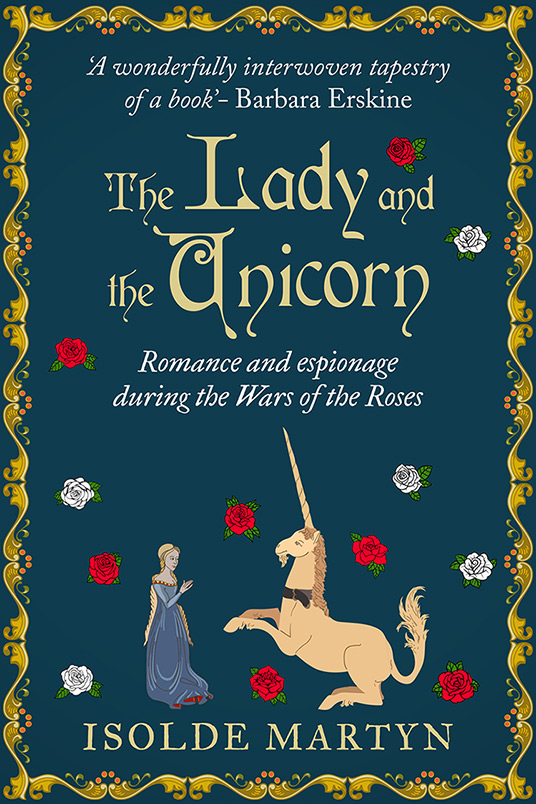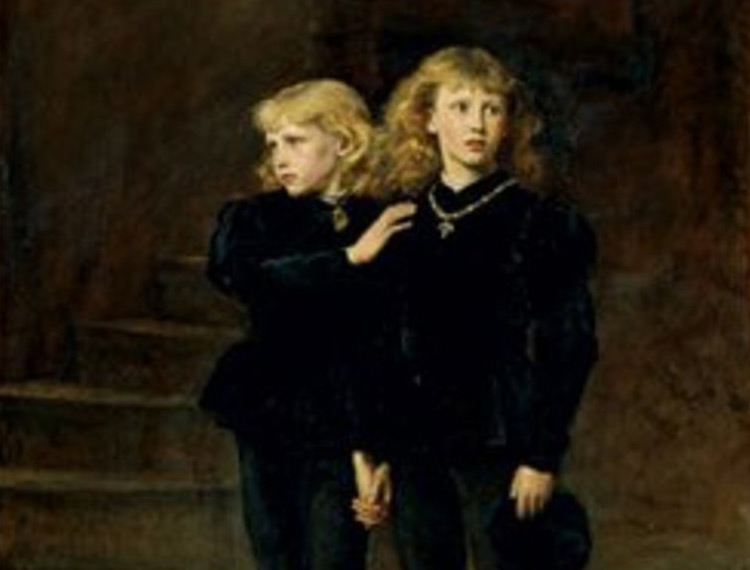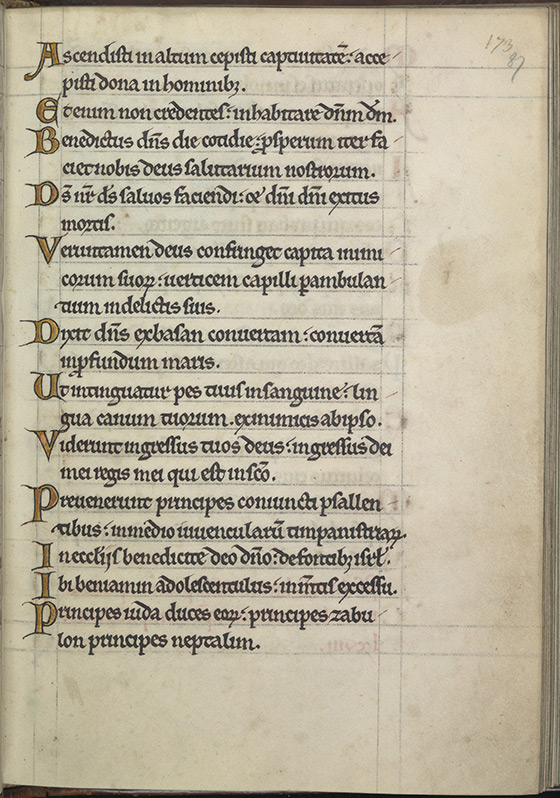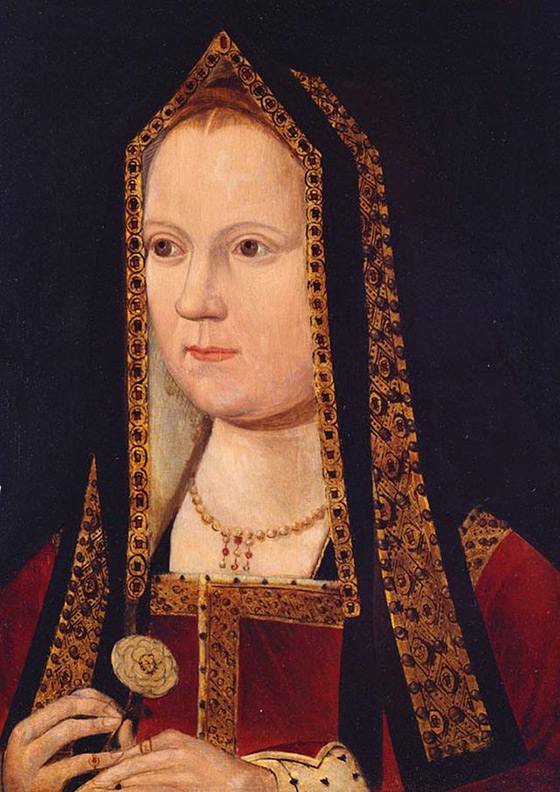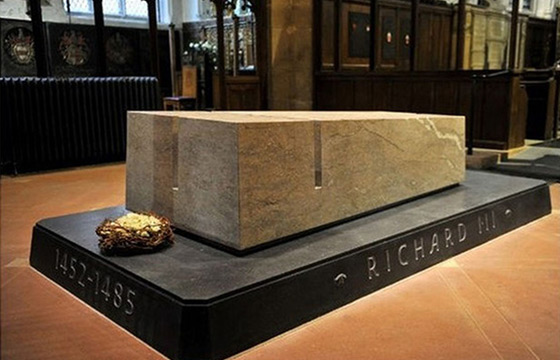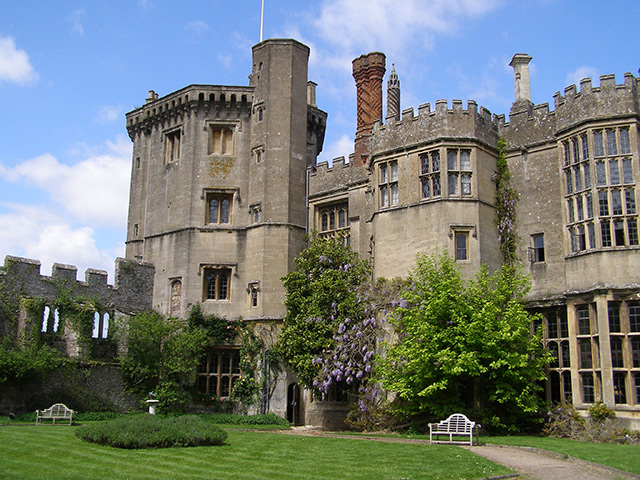The Richard III Society (NSW Branch) have invited Isolde to do an international Zoom chat about her Wars of the Roses novels: Mistress to the Crown and The Golden Widows.
Date: 15 June 2024
Times: 7-9pm Sydney EST
10 am – noon UK GMT
If any readers would like to book in for this, please contact the NSW Richard III Society at richard3nswpublications@gmail.com
Country Town
Delighted to announce that Country Town is in the shortlist for the Children’s Book Council of Australia’s Eve Pownall Award!
Isolde and illustrator Louise Hogan have given their first school talk to 125 boys in Grade 6. Unfortunately, Robyn, Isolde’s co-author, wasn’t able to join them because of work commitments.
They certainly enjoyed meeting the students and the meeting got all the boys thinking about asking their grandparents about their family’s history.
The Lady and the Unicorn – Sapere Books
No one knows the identity of the woman spy that King Edward IV sent across to Calais with messages for his brother, the Duke of Clarence, begging him to change sides. The Lady of Calais had to be someone who could easily have access to the duke. This implies she was possibly of noble birth or maybe had a family connection. The ideal candidate was Margaret, the Earl of Warwick’s bastard daughter, since she was half-sister to the duke’s wife, Isabella, and may have been brought up as a companion to her and her sister Anne. We do know that Margaret was later one of the ladies attending at the coronation of Anne and Richard III. Margaret also may have been the mysterious relative of Warwick’s that King Edward was rumoured to have seduced. She would have been the right age and less of a ‘no go area’ than the earl’s legitimate daughters. So there you have the heroine of my novel, and the hero — well, the man she married — Richard Huddleston. In truth, he may have been a lot older than her. I don’t know. But he became the other main character.
I do hope you will find the story of Margaret and Richard and the political intrigue surrounding them a good read.
This story was also published in the USA as The Maiden and the Unicorn. It is also available in German at Dotbooks as Der Stolz der Lady
The Lost Princes
How refreshing to hear about some new historical documents that have come to light concerning the fate of the Princes in the Tower. Philippa Langley has done it again, pioneered a fresh path through the shadows. She has achieved this by recruiting a team of researchers to comb the European archives and by taking a very forensic approach to the investigation.
I’ve now had to change my mind about what happened to Edward V. I was wondering if as a teenager he had actually become so depressed and desperate in the Tower that he committed suicide. One account (Mancini quoting the boy’s physician, Dr Argentine) says that Prince Edward sought remission of his sins and was convinced he was going to die (presumably because most deposed kings were murdered?) and another theory is that he was suffering from a very painful jaw. Added to that, he was incarcerated with a younger brother who he hardly knew, since from the age of three he had spent most of his life iin his own household at Ludlow rather than with his parents. Prince Richard was only nine. To add to Prince Edward’s poor state of mind, his mentor, the man who had supervised his education, Lord Rivers, his maternal uncle, had been executed. All this could have prompted the lad to take his own life. Of course, he would have believed that to take your own life would be against the will of God, but committing that act would certainly mean that the common people would regard Richard III and Henry, Duke of Buckingham as child murderers.
OK, all that was just a theory and, yes, I’ve abandoned it gladly. The documents that have now come to light are very convincing so if you are interested in the mystery of the Princes, do read Phiippa Langley’s book The Lost Princes or watch her recent doumentary. It is utterly fascinating
A Yuletide round robin from Eleanor of Aquitaine
Mes Amis en Aquitaine,
With this horrid pestilence going round, I’ve been spending a lot of time in the keep so I thought it about time to catch up on my missive writing. I’ll try to keep it short because the scribes do get cramp, poor things.
It’s been a busy year. We decided to crown young Henry as part of his Christmas present (well, what does one give the heir to the throne?). I’d honestly run out of ideas until his father came up with that one.
Geoff and Connie are getting along fine. They’ve bought a castle in Brittany together. Connie is expecting and if it’s a boy, they’ll call him Arthur to shut up all those radical Bretons who are always ranting on about the Pendragon Second Coming.
Richie got a High Distinction in Jousting but I do worry about him. ‘Look at the big picture not just the pages’, I keep telling him. Of course, he will do sleepovers at his friend Blondel’s and I know Blondel’s parents aren’t as strict as Henry and I.
Johno? Ah, our problem. He’s seeing a therapist about his mood swings. He had a good exam result in maths and economics, but I don’t think the other students like him very much.
We’ve had a French student, Alys, doing an exchange stay with us. Henry has been spending a lot of time teaching her our English sort of French and how to write English French letters. At least that what I think he said.
Tom Beckett’s in town again. I do hope he and Henry won’t have ones of their nasty arguments on Intelligent design – they do get very irritated over the hypocras and wafers.
Anyway, there’s my tidings for now. Remember to keep the drawbridge up!
À Bientôt,
Votre
Eleanor Regina
Bessie’s Christmas letter
In 1483, Princess Elizabeth, daughter of the late King Edward IV, found herself and her siblings suddenly declared illegitimate. Her panicky mother, Queen Elizabeth Woodville, insisted they take refuge in Westminster Sanctuary. Here’s what she may have written to her uncle, now crowned King Richard III.
Abbot’s House
Westminster Sanctuary
1483
Dear Uncle Dickon,
I’m a celebrity, get me out of here!
Do you think you can twist Mum’s arm to let us out for Chrissie? I am so booooored with being here (whoops, forgot that was your insignia—no insult intended, still have that cuddly little boar you gave me when I was little). Mum is being an absolute pain (she’s missing her Pilates classes) and we can’t move in here for chests and candelabra. Cis tripped over a tapestry pole last week. It’s just such a squash.
Master Nesfield, the sergeant you put in charge is really dishy. I’ve practised flirting with him to let me sneak out for a walk but he’s being very loyal to you.
Look, I understand what’s going on and that Dad was really wicked in proposing to Mum when Nell Talbot was still around and then them wedding in secret at Gran and Grandpa’s. Really stooopid. I don’t care, though. I think you’ll make a really good king though it’s a shame Aunty Anne’s health is a bit iffy. Please give her a gentle hug from me.
Can I suggest you keep an eye on Cousin Margaret? She sent some GP in to see Mum the other day and he was waxing lyrical about that son of hers, Henry. They thought I wasn’t listening but, heck, you can’t exactly not. The fellow (Henry, that is) sounds a right turnip, to be honest, but apparently the French think he’s a weapon of mass destruction. Boom, boom, to them, silly frogs.
BTW are you going to get your young Ned down for York for Christmas? It would be good to meet him at last. I’d like to get him a book for a present. What’s he interested in? Chess? Hunting?
Look, promise me, you’ll get us out of here asap.
Love you heaps!
Xxx
Bess
PS: I imagine my little brother is furious but it’s Dad he should be angry with.
PPS: Cis has run out of nuts for her pet squirrel. Could you be wonderful and send us over a bag from the palace.
Richard III demands a say in his reburial
Richard III demands a say in his reburial
Another document you won’t find in the UK’s National Archives
2012: Email sent to Leicester Council from riii@mecloud.com.heaven
Dear Mayor and Councillors,
I read in the Telegraph this morning that my bones have been found. About ruddy time! I’ve been lying in that damn damp carpark waiting for decades, but did you knaves consider that, no, it was ‘He’s in a horse trough at the bottom of the river’ and ‘Let’s move on to the next subject: waste disposal.’ Well, thank heaven for John and Philippa finally getting the gravediggers in. Oh, wash my mouth out, they prefer to be called archaeologists, do they?
Right, what I want to know is who is going to make the decision about where I’m going next, the bones, I mean. How about Westminster Abbey with Anne?
Standing room only? Pah, they could kick out the Percys and give Anne and I a chapel all to ourselves. You reckon not? Oh, come on, that bastard Tudor and his friggin’ mother have plenty of social distancing from the rest. And what about the Tower chicken bones in the urn?
No, not Windsor! I don’t want to go in with Ned and her indoors. A Woodville “lying” next to me. I had enough of that when I was living.
Holy Paul! You are telling me unless the Home Secretary intervenes, the bones of anyone who came to a sticky end (mine was sticky alright) have to be buried within a certain radius of the place of death. Who is this Home Secretary person? Is it because of the plague he’s working from home and not in his office. You say he doesn’t want to interfere? Could someone notify him I was a king. K-I-N-G?
What about Middleham or York Minster? I really loved it up there.
Oh, Leicester wants to attract tourists? TOURISTS? What, like pilgrims? You want my bones to make money for you? And what do I get from this deal?
A new tomb? Pah, I had one of those before in the Greyfriars Chapel. How do I know a developer isn’t going to rip into the back of your cathedral and build a highrise?
You give me your word?
What about my burial procession and a lying in state? I want it like we did for my dad — at least 600 in mourning robes with brooches on their hats and torches. No, not those sort of torches. You reckon over a thousand unpaid volunteers lining the road. Not bad, but, what, only one horse? More horses! And move my statue! Are we settled now? You want Leicester City winning the Cup Final?
I don’t know but….
OK, done!
Encountering your hero and heroine’s descendants
When you write about historical people, it’s always a thrill to meet someone who is actually descended from them. Often, it turns out to be a cadet branch, but when you come across a Dudley, a Hastings and a Tyrell, who can trace their line back to the fifteenth century and further still, it’s quite mind-blowing.
What is especially spine-chilling for any historical novelist is to be contacted by the descendants of a hero and heroine in one of their novels. This has happened to me with Margery Neville and Richard Huddleston, the major characters of The Maiden and the Unicorn. Margery was the bastard daughter of Warwick the Kingmaker and sister-in-law to King Richard III.
A few years ago I had an email from a Canadian lawyer who was researching the Huddlestons. It turned out he is descended from Margery and Richard’s third child, Margaret (Huddleston) Salkeld. This triggered off an excellent email friendship between us, and in 2008 he and his daughter made an ancestral pilgrimage, if you like, through Cumbria.
More recently, I had an email from a lady in Australia who is descended from Margery and Richard’s oldest daughter, Joan Fleming. Her family tree also includes Archbishop George Neville’s illegitimate daughter
Can you imagine what a delight it was to put these cousins in touch with one another? Somehow it makes Margery and Richard seem more alive in my mind than ever, a validation that they lived and breathed.
Malleus Maleficarum
In writing about a medieval clairvoyant in The Silver Bride, charges of witchcraft in Mistress to the Crown and more recently in my new mss on the death of Shakespeare’s patron, I have had to research sorcery in the Middle Ages and Tudor eras. That was how I came across the legal treatise Malleus Maleficarum.
Most people have never heard of this treatise but it is arguably the most important document in the history of witchcraft. It was first published in about 1486 and became a regular bestseller. At least 30 editions were published between 1487 and 1669. The literal translation of the title is The Hammer of Evil but the more common translation was The Witch Hammer and this document became the bible of inquisitors and witchfinders throughout the Christian world. Not just a fifteenth century All You Ever wanted to know about Witchcraft but were afraid to ask with FAQs such as ‘Whether witches can by some Glamour Change men into Beasts’. No, it was destined to become the legal procedure manual.
Malleus Malificarum was commissioned by Pope Innocent VIII, who was determined to take a strong stand against the witchcraft, especially in the Holy Roman Empire. The treatise was written by two professional experts, Heinrich Kramer and James Sprenger. Kramer was a Dominican and inquisitor from Lower Alsace. Sprenger, who came from Basle, was a Dominican inquisitor, high ranking academic and a mystic.
Up until that time, churchmen probably used their common sense in cases of sorcery that came before them but once they had this document, officially sanctioned by the pope, things changed. While the treatise may have been intended originally merely as guidelines, once it was in print, its clauses were interpreted as standard procedure and any flexibility was stifled. Malleus Maleficarum became the handbook of inquisitors.
How to question a suspected witch, how to torture them, and the different types of sentencing, depending whether the charge was thought to be serious or light. The attempt to be objective and just in dealing with suspects is clearly present in the writing but the medieval ignorance of Kramer and Sprenger, highly intelligent men of their day, is chilling to a modern reader. Killing children, aborting babies, making men impotent, turning people into animals and summoning hailstorms are some of the issues that the authors eagerly discuss. They also ask why it is ‘Women are chiefly addicted to Evil Superstitions?’ Over the next two centuries, the misogynistic slant in Malleus Malificarum would sanction the torture and death of many innocent women.
Even before Malleus Maleficarum, there are incidences of men using accusations of witchcraft and playing on people’s fears to get rid of women who have become a personal threat. Kings’ mistresses and even duchesses and queens were not immune from such charges. However, the biggest witchcraft age of terror was the mid-seventeenth century when professional witchfinders journeyed throughout England.
During the war between King Charles I and Parliament, the central justice system fell into disarray and because the itinerant judges who usually listened to village trials with impartial ears were not doing their rounds, local magnates were able to exert more control over the district courts. For the most part, these men were definitely not impartial.
Late twentieth century academic research into many of the cases indicated that it was often the Puritan ‘lord of the manor’ and magistrate who ‘encouraged’ the witchfinder to seek charges against an aged busybody woman in the village.
If a local gentleman had been ‘quite a lad’ in his youth, he certainly wasn’t keen on some old village woman with a long memory muttering, ‘Ooooh, I can tell you some spicy tales about him that would knock that superior smile off his face. He maybe a holier-than-thou Puritan now, but there’s plenty of children around this neighbourhood with his ears and chin.’
If such an old woman had no son or husband to protect her, she was extremely vulnerable. Today, it is impossible to believe that the huge number of women found guilty in mid-seventeenth century England were witches. Agreed, it is likely some of them were amateur healers, who brewed up natural medicines, but the evidence suggests that many women died because the local gentry wanted them silenced.
Isolde Martyn 2021
Thornbury Castle
Just north of Bristol is the modest town of Thornbury, and for most users of the M5 motorway, it’s just a name on the road sign. Beyond the town, however, lies a palace that was meant to rival Hampton Court. It belonged to Henry VIII’s cousin and rival, Edward Stafford, 3rd Duke of Buckingham. If Edward had his sights on Henry’s crown, his ambition came to an abrupt halt when he was arrested at Thornbury in 1521, taken to the Tower of London and beheaded for treason.
I was keen to visit Edward’s beloved Thornbury as he was one of the characters in two of my novels – the boy Ned – in THE SILVER BRIDE and THE DEVIL IN ERMINE. Some readers might be more aware of him as the duke beheaded at the beginning of Philippa Gregory’s THE OTHER BOLEYN GIRL or in the early episodes of TV series THE TUDORS.
Today Edward’s palace is now a very up-market hotel but the public can explore the beautiful grounds. We were fortunate to meet a receptionist who not only appreciated the history but was delighted to show us round. She’d even read some of my novels!
There are no visible signs of the medieval castle that once stood here but archaeologists have excavated the fine tiled floor of the great hall. Because of cost to maintain it, the tiles were re-covered with about a foot of turf and, sadly, now lie unseen beneath one of the hotel lawns.
Edward Stafford made Thornbury his chief residence and began rebuilding in 1511. The central gatehouse, corner towers and newfangled brick chimneys have all survived but a much later building nestles behind the splendid oriel windows of what was Edward’s new hall. The luxury bedrooms of the hotel (for those that can afford them) offer fourposter beds and tapestried walls so tons of atmosphere. We had a peek into some of them.
Originally, a covered walkway ran atop a high wall that linked the duke’s apartments with the neighbouring church grounds and would have overlooked the gardens. The latter are beautifully maintained and still retain a lovely early Tudor atmosphere. It is easy to imagine a lady in a brocade kirtle strolling through one of the hedged archways.
Around the periphery wall of the grounds, Edward began to build lodgings for a great number of retainers. Probably many of them were mercenaries, who might be used in a rebellion against the king. Maybe, since they were soldiers, it was considered better to lodge them away from the main palace. At first glance, these buildings look like they’ve been ruined at a later date by Oliver Cromwell’s Roundheads but that was probably not the case. Because of the duke’s sudden arrest on Henry VIII’s orders and the palace being seized by the crown, they were never finished. The castle was returned to the Staffords in the reign of Mary but never reoccupied until it was taken over by the Howards who began its restoration in the nineteenth century.
The hotel contains a small Tudor Hall and kitchen. Even on a very cool day, these rooms have a lovely warm feel about them which is unexpected and which people remark on. However, like most ancient palaces, Thornbury does have ghost stories. The receptionist told us about the misogynist poltergeist who knocks things about when women are in the staffroom but behaves when there are no females present. The staff call it Jasper (after Henry VII’s uncle?) and it seems to respond when it is told off using its name. Then there’s a man in black and a woman in grey who have been seen in the bedrooms area and other people relate glimpsing a lady with greyhounds. Much less believable is the story of ghostly children who appear when the hotel enjoys a firework night.
Edward inherited Brecon Castle and Thornbury from his father, Henry Stafford, Richard III’s erstwhile ally and cousin, who was executed for treason in 1483. After the Tudor takeover in 1485, Edward’s mother, Katherine Woodville, married Jasper, Earl of Pembroke and Duke of Bedford, Henry VII’s uncle. In August 1486, wardship of Edward and custody of his inheritance was given to Margaret Beaufort, the king’s mother, and her right to revenues was made retrospective from September 1485. Thornbury, however, was retained by Catherine Woodville as part of her marriage jointure.
The crown levied extensive fines for Katherine’s remarriage in 1596 and then later when Edward entered his inheritance before he came of age. Because of his claim to the throne as a descendant of Edward III, Edward was always a potential threat to Henry VIII. He did hold the post of Constable of England and showed flair as an efficient administrator but Cardinal Wolsey blocked his political ambitions and increasing influence. He managed to survive until 1521. King Henry must have maintained Thornbury in tis luxuriant state after that because in 1535 he and Anne Boleyn enjoyed a honeymoon there for ten days. The dukedom was restored to Edward’s son by King Edward VI.
Although Edward Stafford was not the most popular man, it is possible to feel sorry that he was never able to complete his palace and grow old enjoying its beautiful setting. The property was on the market in 2016 for £8.5 million. Fortunately, it has continued as a hotel so that visitors like us can still have access to the grounds and be able to appreciate its unquestionable splendour.


